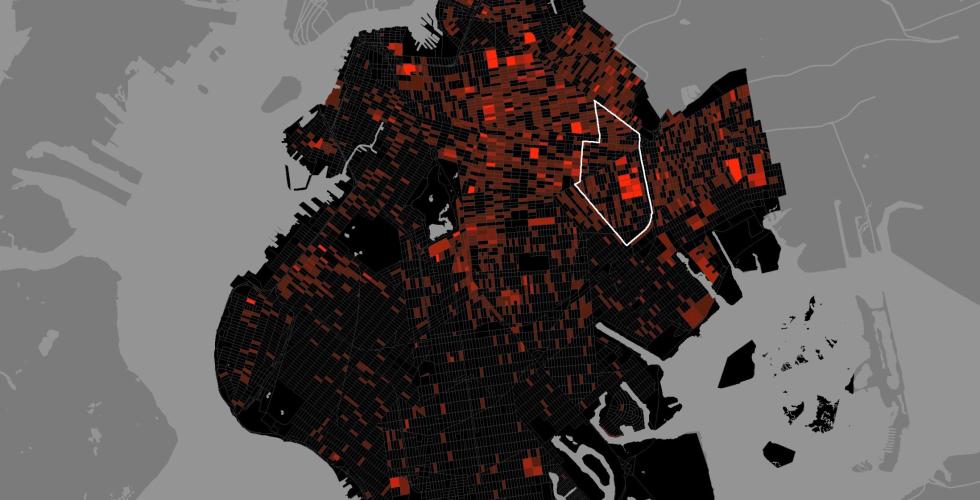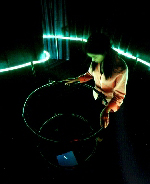Today, I’d like to talk about three artworks: The Art of Noises (1913) by Luigi Russolo, Signal to Noise (2012) by Casey Reas, and Equivalents II (1992/2025) by George Legrady.
The Art of Noises (1913) by Luigi Russolo
“The Art of Noises (1913)” by Luigi Russolo has always fascinated me. It’s not just an old Futurist manifesto—it’s a bold statement that completely redefined what music could be. In this work, Russolo argues that as machines and modern life have changed the world, our ears have also changed. The traditional instruments of the orchestra, he says, are no longer enough to express the sounds and emotions of the modern age.
Even today, I believe his idea remains highly sensible. In both classical and modern music, people often still chase perfect harmony—pure intervals, beautiful chords, pleasant tones. But like Russolo said, harmony alone can feel too limited now. Noise, with all its roughness and unpredictability, has become part of our world, and it deserves to be part of music too.
Ever since the Industrial Revolution, people’s lives have become more complex. Machines, electricity, and technology have reshaped everything—how we live, how we see, and especially how we hear. We no longer live in a quiet countryside; our daily life is surrounded by the hum of engines, electrical buzzes, and digital beeps. In a way, these sounds are the true soundtrack of our time.
For me, that’s why the invention of synthesizers and electronic sound design feels so meaningful. They opened the door to a new kind of creativity—one where noise is not something to remove, but something to shape and use. When I think about art, I don’t think it’s only about beauty; it’s also about expressing truth and emotion. And in this noisy, digital world, noise itself is a kind of truth.
So I really agree with Russolo. Traditional tones can no longer express everything we feel in this era. Music, like art in general, has to keep evolving—blending technology, data, and sound into something that reflects the world we actually live in. In that sense, The Art of Noises wasn’t just about sound—it was a vision of the future, one that we’re still living out today.
Signal to Noise (2012) by Casey Reas
“Signal to Noise” by Casey Reas is a generative software artwork that transforms live television signals into shifting digital collages. What draws me to this piece is how it captures the chaos of modern media — a world overflowing with fragments, pixels, and noise. Instead of trying to clean or fix the distortion, Reas turns it into something unexpectedly beautiful.
For me, this work feels like a mirror of our digital lives today. We’re constantly surrounded by visual clutter — endless feeds, flashing ads, and bits of broken information. Signal to Noise doesn’t try to control that chaos; it simply lets it exist. The moving pixels almost feel like sound waves, reminding me of how Luigi Russolo once turned noise into music.
What I love most is how the piece makes “imperfection” expressive. The noise, glitches, and distortions aren’t mistakes — they’re part of the message. In a way, Reas shows that even digital disorder can reveal truth, reflecting how technology reshapes not only what we see but how we feel and perceive the world around us.
Equivalents II (1992/2025) by George Legrady
“Equivalents II” by George Legrady is an interactive artwork that turns language into visual form. In the original 1992 version, viewers typed a short text, and the software generated abstract, cloud-like images based on those words. The updated 2025 version uses Python’s Natural Language Toolkit (NLTK) to analyze each text’s meaning and emotion, transforming them into colors, shapes, and textures. What fascinates me is how something structured and logical like language can become soft, emotional, and unpredictable through code.
For me, this work shows how deeply connected data and emotion can be. Every word carries hidden feelings and associations, and Legrady makes those layers visible. When viewers see their text turned into an image, it feels like watching thoughts and emotions take shape. It reminds us that digital technology can also express sensitivity and interpretation, not just calculation.
I also think Equivalents II anticipated today’s text-to-image tools like DALL·E or Midjourney. But unlike commercial systems that focus on realism, Legrady’s work explores interpretation — it doesn’t show what we say, but how our words feel. The small visual distortions and “noise” in the images make the results more human, reminding us that meaning is always shifting when filtered through technology.
In the end, Equivalents II feels like a poetic bridge between language and image, logic and emotion — showing that even algorithms can reveal something deeply human.

- Equivalents II by George Legrady
Although these three works — The Art of Noises (1913), Signal to Noise (2012), and Equivalents II (1992/2025) — were created in very different eras, they all explore how technology transforms the way we perceive and interpret sound, image, and data. Each piece challenges our sense of what is “meaningful” or “beautiful,” especially when the line between order and chaos starts to blur.
Together, they trace an ongoing evolution — from mechanical sounds to digital images, from noise to data, and from chaos to communication. In their own ways, each work reminds us that art and technology are not in conflict but in conversation. They mirror one another, revealing how human expression constantly reshapes itself through the tools and systems of each new age.












